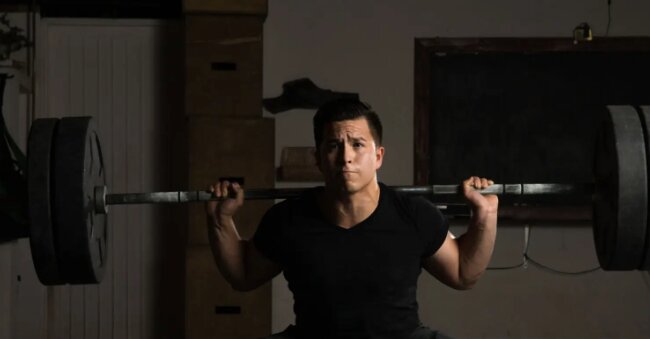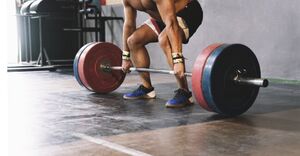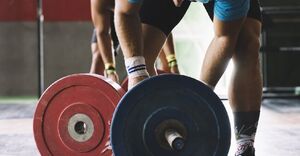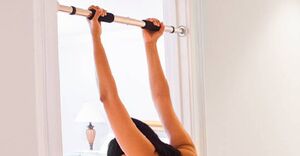
Ultimate Guide to Olympic Barbells: Maximize Your Workout with 10 Proven Benefits
Are you looking to take your workouts to the next level?
Olympic barbells could be the key to maximizing your fitness routine.
We will explore what Olympic barbells are, why they are essential for workouts, and the benefits they offer.
Guidance on selecting the right Olympic barbell for your needs will be provided, as well as tips on how to properly use them in exercises such as squats, deadlifts, and bench presses.
Let’s dive in and elevate your fitness game with Olympic barbells!
What Are Olympic Barbells?
Olympic Barbells are essential workout equipment commonly used in strength training and weightlifting exercises. These barbells are designed to meet the specifications set by the International Weightlifting Federation (IWF) for Olympic weightlifting competitions.
Their construction typically includes a long straight bar with rotating sleeves at the ends to allow smooth rotation of weight plates. This design not only facilitates efficient weight distribution during exercises but also reduces the risk of wrist strain or injury. The purpose of Olympic Barbells extends beyond just lifting weights; they play a crucial role in enhancing overall body strength, muscle development, and power output. Fitness enthusiasts often prefer Olympic Barbells due to their durability and ability to accommodate heavy loads, allowing for progressive resistance training and continual muscle growth.
Why Are Olympic Barbells Used in Workouts?
Olympic Barbells are utilized in workouts due to their effectiveness in building strength, enhancing muscle development, and improving overall training outcomes. These barbells provide a challenging and dynamic workout experience that targets various muscle groups simultaneously.
The design of Olympic Barbells, with their standardized weight and length, allows for consistent and progressive training sessions. By incorporating Olympic Barbells into your exercise routine, you can effectively engage different muscle fibers, promoting muscle growth and increasing overall power. The versatility of Olympic Barbells enables a wide range of exercises, from classic lifts like squats and deadlifts to complex movements like clean and jerks, providing a comprehensive approach to strength training and enhancing your fitness levels.
What Are the Benefits of Using Olympic Barbells?
Utilizing Olympic Barbells in exercise routines offers a multitude of benefits, including improved performance, enhanced muscle activation, and accelerated progress for athletes and fitness enthusiasts. These barbells engage stabilizing muscles, promote power development, and contribute to overall strength gains.
By incorporating Olympic Barbells into workouts, individuals can benefit from the versatility they offer in terms of exercise variations and intensity levels. The structured design of these barbells allows for precise control during lifts, leading to better form and reduced risk of injury. The consistent use of Olympic Barbells can also help athletes build mental focus and discipline, essential for success in sports competitions and fitness challenges.
How to Choose the Right Olympic Barbell for Your Workout?
Selecting the appropriate Olympic Barbell for your workout routine is crucial to ensure optimal performance, safety, and effectiveness in the gym. Understanding the key factors when choosing a barbell can significantly impact your training outcomes.
- Weight capacity is a fundamental consideration, ensuring that the barbell can accommodate the amount of weight you intend to lift.
- The grip texture plays a role in providing a secure hold during exercises, especially important for heavy lifts. Knurling, the textured pattern on the bar, influences grip comfort and stability.
- It’s also essential to assess the barbell’s versatility, determining if it aligns with your fitness goals and training preferences. By considering these factors, you can select a barbell that enhances your workouts and helps you reach your fitness milestones.
What to Consider When Choosing an Olympic Barbell?
When selecting an Olympic Barbell, it is essential to consider factors such as the barbell’s weight capacity, durability, knurling pattern, and overall performance to ensure it aligns with your fitness goals and training requirements.
Quality is paramount when it comes to Olympic Barbells, as it directly impacts your workout experience. Investing in a barbell made from high-quality materials not only ensures longevity but also enhances comfort during lifts. The knurling pattern on the barbell plays a crucial role in providing a secure grip, reducing the risk of slippage. The weight capacity of the barbell should match your strength levels to maximize performance and prevent injury. Combine these elements for a seamless and effective workout session.
What Are the Different Types of Olympic Barbells?
There are various types of Olympic Barbells designed to cater to different training styles and preferences. Understanding the distinctions between these barbells can help individuals select the most suitable option for their workout routines.
- Powerlifting barbells, known for their high tensile strength and maximum load capacity, are ideal for exercises like squats and deadlifts, focusing on pure strength development.
- On the other hand, Olympic weightlifting barbells are crafted with more whip and spin to support dynamic movements such as snatches and clean and jerks commonly seen in weightlifting competitions.
- Multi-purpose barbells offer a balanced blend, suitable for a wide range of exercises blending strength and speed in training routines.
Powerlifting Barbell
The Powerlifting Barbell is specifically designed for powerlifting exercises such as squats, deadlifts, and bench press. It is characterized by a rigid construction, higher weight capacity, and aggressive knurling to support heavy lifts and strength-focused workouts.
The rigidity of the Powerlifting Barbell allows for optimal stability during lifts, reducing the risk of bar whip or bending. This stability enhances the lifter’s confidence to push their limits and lift heavier weights. The high weight capacity of the barbell accommodates progressive overload, a key principle in strength training for muscle growth and increased strength gains. The aggressive knurling provides a secure grip, preventing slippage and ensuring precise control over the barbell for safe and effective powerlifting movements.
Olympic Weightlifting Barbell
The Olympic Weightlifting Barbell is engineered for Olympic weightlifting disciplines such as the clean and jerk, snatch, and overhead press. It features a more dynamic design, refined knurling, and greater flexibility to facilitate explosive lifts and technical movements.
This specialized barbell is meticulously crafted to withstand the rigorous demands of Olympic weightlifting, where precision, power, and speed are essential components of successful lifts. The specific features of the barbell, including its standardized length and weight, allow athletes to consistently practice and perfect their lifting techniques. With its durable construction and optimal grip, the barbell serves as a crucial tool in developing strength, speed, and coordination, enabling weightlifters to execute complex movements with efficiency and accuracy.
Multi-Purpose Barbell
The Multi-Purpose Barbell is a versatile option that caters to a wide range of exercises, including squats, rows, and cleans. It offers a balance between strength training and functional fitness, making it suitable for individuals with diverse workout preferences.
With its adjustable weight plates and various grip positions, users can easily customize their workout intensity and target different muscle groups effectively. Whether you are aiming to build muscle, improve endurance, or enhance overall fitness levels, the Multi-Purpose Barbell provides a dynamic platform for achieving your fitness aspirations. Its compact design also makes it a convenient choice for home gyms or limited workout spaces, offering a cost-effective solution for those looking to elevate their exercise routines.
What Exercises Can Be Done with Olympic Barbells?
Olympic Barbells can be utilized for a wide range of exercises that target different muscle groups and enhance overall strength and training effectiveness. From classic compound movements to dynamic Olympic lifts, these barbells offer a versatile platform for diverse workout routines.
They are particularly effective for exercises such as deadlifts, squats, bench press, overhead press, and rows, providing a stable and challenging foundation for strength development. Olympic Barbells promote muscle engagement across the body due to their weight distribution and grip options, making them essential for achieving balanced and comprehensive workouts. Incorporating exercises like power cleans, snatches, and jerks with Olympic Barbells helps in improving explosive power, coordination, and speed, ensuring a holistic approach to fitness training.
Squats
Squats with Olympic Barbells are a fundamental lower body exercise that targets the quadriceps, hamstrings, and glutes. Maintaining proper form and technique while performing squats is essential to prevent injury and maximize muscle engagement.
To execute a squat with the Olympic Barbells correctly, start by standing with feet shoulder-width apart, toes slightly pointed outwards. Hold the barbell across your upper back with a firm grip, keeping your chest up and core engaged.
As you lower your body, ensure your knees track over your toes and your hips move back. Aim to reach a depth where your thighs are parallel to the ground or lower, maintaining a neutral spine. This depth helps activate the targeted muscles effectively for optimal lower body strength development.
Deadlifts
Deadlifts using Olympic Barbells are a full-body compound exercise that primarily targets the posterior chain, including the lower back, glutes, and hamstrings. Proper form and lifting mechanics are crucial for safe and effective deadlift execution.
Maintaining a neutral spine, engaging the core, and initiating the movement with a hip hinge are key components of a proper deadlift technique. By performing deadlifts with correct form, individuals can strengthen their entire body, improve muscular endurance, and enhance grip strength.
The deadlift is beneficial for improving functional strength, which translates to better performance in daily activities and sports. Consistent practice of deadlifts not only enhances overall strength but also aids in injury prevention by reinforcing proper lifting mechanics and muscle activation patterns.
Bench Press
The bench press with Olympic Barbells is a classic upper body exercise that targets the chest, shoulders, and triceps. Performing bench presses with proper technique, incorporating the right number of reps and sets, is essential for maximizing muscle engagement and strength gains.
Proper execution of the bench press can significantly enhance chest activation and shoulder stability. Engaging the chest muscles throughout the movement and maintaining shoulder blades retracted on the bench can help prevent shoulder injuries and ensure effective recruitment of the targeted muscle groups.
When structuring your bench press workout, consider a rep and set scheme that aligns with your fitness goals, whether it’s focusing on hypertrophy with moderate weight and higher reps or strength development with heavier weights and lower reps. This strategic approach can lead to optimal upper body development and overall progress in your training regimen.
Overhead Press
The overhead press with Olympic Barbells is a shoulder-strengthening exercise that targets the deltoids and triceps. Maintaining proper form, utilizing the correct technique, and progressing in weight gradually are key aspects of performing effective overhead presses.
Ensuring that your feet are shoulder-width apart, core engaged, and back straight, you initiate the movement by pressing the barbell overhead. As you push the weight up, focus on keeping your elbows directly underneath the bar for optimal shoulder activation. The triceps come into play as you lock out at the top of the movement, fully extending your arms. It is crucial to lower the barbell in a controlled manner to avoid injury and maximize muscle engagement.”
Rows
Rowing exercises with Olympic Barbells are effective for targeting the back muscles, including the lats and rhomboids, while also engaging the core for stabilization. Maintaining a strong and stable core is crucial during rowing movements to prevent strain and promote proper muscle activation.
By incorporating rowing exercises with Olympic Barbells into your workout routine, you not only strengthen key back muscles but also improve overall posture and balance. The controlled movement of rowing helps in building endurance and enhancing functional strength, making daily tasks easier.
The integration of core stability in rowing techniques contributes to better spine alignment and reduced risk of lower back injuries. Emphasizing core engagement while performing rows with Olympic Barbells ensures that your body executes the movements efficiently and safely, enhancing your overall fitness level.
Cleans
Cleans using Olympic Barbells are explosive full-body movements that combine strength, power, and coordination. These dynamic exercises target multiple muscle groups, including the legs, back, and shoulders, and are essential for enhancing power output and athletic performance.
By mastering the technique of cleans, individuals can develop explosive power generation and improve their overall functional strength. The swift, controlled movement involved in executing cleans not only engages the major muscle groups but also requires precise coordination and timing. This combination of strength, speed, and coordination makes cleans a versatile exercise for athletes across various disciplines. The intensity of cleans with Olympic Barbells activates fast-twitch muscle fibers, contributing to increased muscle recruitment and dynamic power development.
Snatches
Snatches with Olympic Barbells are complex overhead lifts that require precision, speed, and flexibility. These exercises target the entire body, focusing on explosive power development, technique refinement, and flexibility enhancement.
Performing snatches with Olympic Barbells not only helps in building strength but also enhances coordination and agility. The rapid, explosive movement involved in snatches engages various muscle groups simultaneously, making it a highly efficient workout. By practicing proper form and technique, individuals can improve their overall athletic performance and reduce the risk of injury. The dynamic nature of snatches challenges the cardiovascular system, leading to improved endurance and conditioning. This lift also promotes mobility and stability, which are crucial for functional movement patterns in sports and everyday activities.
How to Properly Use Olympic Barbells in Your Workout?
Properly utilizing Olympic Barbells in your workout regimen involves incorporating effective techniques, maintaining proper form, and progressing gradually to prevent injuries and optimize training outcomes. Paying attention to form, technique, and safety measures is essential for a successful and productive workout session.
When using Olympic Barbells, it’s crucial to focus on your grip placement and hand positioning to ensure proper alignment and minimize strain on your wrists and shoulders. Remember to engage your core muscles throughout the movements to stabilize your body and support your spine. It is also recommended to start with lighter weights to master the correct form before gradually increasing the load. Always keep the barbell close to your body to avoid unnecessary strain, and make sure to warm up adequately before each session to prepare your muscles for the workout.
Warm-Up and Stretch Before Using Olympic Barbells
Prior to engaging in exercises with Olympic Barbells, it is crucial to perform a comprehensive warm-up and stretching routine to prepare the muscles, joints, and connective tissues for the upcoming workout. Warm-up activities increase blood flow, mobility, and flexibility, while stretching helps prevent injuries and improve range of motion.
This preparatory phase is essential for athletes and fitness enthusiasts alike as it primes the body for the intensity of weightlifting exercises. By incorporating dynamic movements like arm swings, leg swings, and bodyweight squats into your warm-up, you can boost circulation, warm up the muscles, and enhance overall performance.
Likewise, stretching exercises such as hamstring stretches, shoulder stretches, and hip flexor stretches can increase flexibility, reduce the risk of strains, and aid in maintaining proper form during barbell lifts.
Start with Lighter Weights and Focus on Proper Form
When beginning a workout session with Olympic Barbells, it is advisable to start with lighter weights to master proper form, technique, and movement patterns. Focusing on form over weight load ensures muscle engagement, injury prevention, and skill development.
This emphasis on technique mastery not only aids in activating the targeted muscles effectively but also serves as a fundamental building block for progress in strength training. By gradually increasing the weight after mastering the correct form, individuals can make sustainable gains without compromising safety. The journey from lighter weights to heavier loads should be guided by a focus on precision and control, allowing for a more profound connection between the mind and muscles during each repetition.
Gradually Increase Weight and Intensity
As you advance in your workout routine with Olympic Barbells, it is essential to gradually increase the weight and intensity of your exercises to promote muscle growth, strength development, and training progression. Incremental adjustments in weight load and intensity levels challenge the muscles and drive continuous improvement.
This concept, known as progressive overload, plays a crucial role in stimulating muscle adaptation and enhancing overall performance. By consistently pushing your body to lift heavier weights or perform more demanding exercises, you create a stimulus that forces the muscles to adapt and grow stronger.
Over time, this incremental progression leads to significant strength gains and aids in achieving your fitness goals efficiently. Without a systematic approach to increasing the demands placed on your muscles, progress can stagnate, hindering your journey towards peak physical condition.
Listen to Your Body and Rest When Needed
Listening to your body’s signals and acknowledging the need for rest and recovery during workouts with Olympic Barbells is paramount for preventing overtraining, fatigue, and potential injuries. Adequate rest periods allow muscles to repair, regenerate, and grow, contributing to long-term progress and performance improvement.
Prioritizing self-awareness ensures that you maintain a healthy balance between pushing your limits and allowing sufficient time for recovery. Ignoring the signs of fatigue and overexertion can lead to decreased workout effectiveness and even setbacks in your fitness journey.
By incorporating rest days into your routine, you give your body the opportunity to adapt and strengthen, ultimately enhancing your physical capabilities and reducing the risk of overuse injuries associated with intense Olympic Barbell training.




No Comments